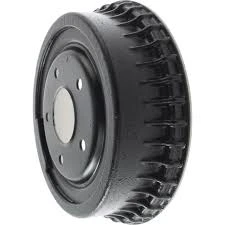
-
 Afrikaans
Afrikaans -
 Albanian
Albanian -
 Amharic
Amharic -
 Arabic
Arabic -
 Armenian
Armenian -
 Azerbaijani
Azerbaijani -
 Basque
Basque -
 Belarusian
Belarusian -
 Bengali
Bengali -
 Bosnian
Bosnian -
 Bulgarian
Bulgarian -
 Catalan
Catalan -
 Cebuano
Cebuano -
 Corsican
Corsican -
 Croatian
Croatian -
 Czech
Czech -
 Danish
Danish -
 Dutch
Dutch -
 English
English -
 Esperanto
Esperanto -
 Estonian
Estonian -
 Finnish
Finnish -
 French
French -
 Frisian
Frisian -
 Galician
Galician -
 Georgian
Georgian -
 German
German -
 Greek
Greek -
 Gujarati
Gujarati -
 Haitian Creole
Haitian Creole -
 hausa
hausa -
 hawaiian
hawaiian -
 Hebrew
Hebrew -
 Hindi
Hindi -
 Miao
Miao -
 Hungarian
Hungarian -
 Icelandic
Icelandic -
 igbo
igbo -
 Indonesian
Indonesian -
 irish
irish -
 Italian
Italian -
 Japanese
Japanese -
 Javanese
Javanese -
 Kannada
Kannada -
 kazakh
kazakh -
 Khmer
Khmer -
 Rwandese
Rwandese -
 Korean
Korean -
 Kurdish
Kurdish -
 Kyrgyz
Kyrgyz -
 Lao
Lao -
 Latin
Latin -
 Latvian
Latvian -
 Lithuanian
Lithuanian -
 Luxembourgish
Luxembourgish -
 Macedonian
Macedonian -
 Malgashi
Malgashi -
 Malay
Malay -
 Malayalam
Malayalam -
 Maltese
Maltese -
 Maori
Maori -
 Marathi
Marathi -
 Mongolian
Mongolian -
 Myanmar
Myanmar -
 Nepali
Nepali -
 Norwegian
Norwegian -
 Norwegian
Norwegian -
 Occitan
Occitan -
 Pashto
Pashto -
 Persian
Persian -
 Polish
Polish -
 Portuguese
Portuguese -
 Punjabi
Punjabi -
 Romanian
Romanian -
 Russian
Russian -
 Samoan
Samoan -
 Scottish Gaelic
Scottish Gaelic -
 Serbian
Serbian -
 Sesotho
Sesotho -
 Shona
Shona -
 Sindhi
Sindhi -
 Sinhala
Sinhala -
 Slovak
Slovak -
 Slovenian
Slovenian -
 Somali
Somali -
 Spanish
Spanish -
 Sundanese
Sundanese -
 Swahili
Swahili -
 Swedish
Swedish -
 Tagalog
Tagalog -
 Tajik
Tajik -
 Tamil
Tamil -
 Tatar
Tatar -
 Telugu
Telugu -
 Thai
Thai -
 Turkish
Turkish -
 Turkmen
Turkmen -
 Ukrainian
Ukrainian -
 Urdu
Urdu -
 Uighur
Uighur -
 Uzbek
Uzbek -
 Vietnamese
Vietnamese -
 Welsh
Welsh -
 Bantu
Bantu -
 Yiddish
Yiddish -
 Yoruba
Yoruba -
 Zulu
Zulu
drum brake grease points
Understanding Drum Brake Grease Points Maintenance for Safety and Performance
Drum brakes are a critical component of many vehicles, playing a crucial role in ensuring safety and performance on the road. While modern braking systems are designed to be efficient and low-maintenance, regular upkeep is essential to prolong their lifespan and enhance vehicle performance. One aspect of this maintenance is the proper application of grease to the designated points in drum brake systems.
Greasing drum brake components involves the strategic application of high-temperature, brake-compatible grease that reduces friction and wear between moving parts. Key areas that require lubrication include the backing plate, the brake shoe pivot points, and the adjusting mechanism. Properly greasing these points helps to prevent rust and corrosion, mitigating the risk of brake failure due to sticking or seizing components.
Identifying Grease Points
1. Brake Shoe Pivot Points The pivot points of the brake shoes are critical as they allow the shoes to pivot outward when the brakes are applied. Ensuring these points are greased minimizes resistance, allowing for smoother operation.
2. Shoe Return Spring Ends The ends of the return springs benefit from a thin layer of grease. This lubrication allows the springs to retract the brake shoes more effectively when the pedal is released, helping to maintain the natural position of the shoes.
3. Adjuster Mechanism The adjuster, which compensates for brake shoe wear, requires lubrication to function smoothly. A well-greased adjuster will provide consistent and responsive braking performance.
drum brake grease points

Selecting the Right Grease
When choosing grease for drum brakes, it’s essential to pick a product that can withstand high temperatures and resist melting or breakdown under pressure. Specialty brake greases often contain additives that improve performance under extreme conditions. Silicone-based or lithium-based greases are commonly recommended due to their heat resistance and anti-corrosion properties.
Application Tips
Applying grease to drum brake components must be done carefully to avoid over-lubrication, which can attract dust and grime, leading to premature wear. A thin, even layer is advisable, focusing on the areas described above. It’s also critical to clean the surfaces before application to ensure that the grease adheres properly.
Conclusion
Regular maintenance of drum brakes, particularly regarding grease application, is vital for vehicle safety and performance. By understanding the importance of grease points and incorporating proper lubrication techniques, vehicle owners can enhance the efficiency and longevity of their brake systems. This proactive maintenance not only extends the life of brake components but also enhances overall driving safety, ensuring a smoother and safer ride.
-
Rear Drum Brakes Maintenance TipsNewsAug.04,2025
-
Key Components Affecting Brake Drum FunctionNewsAug.04,2025
-
Important Inspection for Truck Drum BrakeNewsAug.04,2025
-
How to Prepare for Changing Rear Drum BrakesNewsAug.04,2025
-
Essential Tools for Cleaning Drum Brakes ProperlyNewsAug.04,2025
-
Brake Drum Function GuideNewsAug.04,2025
-
Safety Features of Red Brake DrumsNewsAug.01,2025
